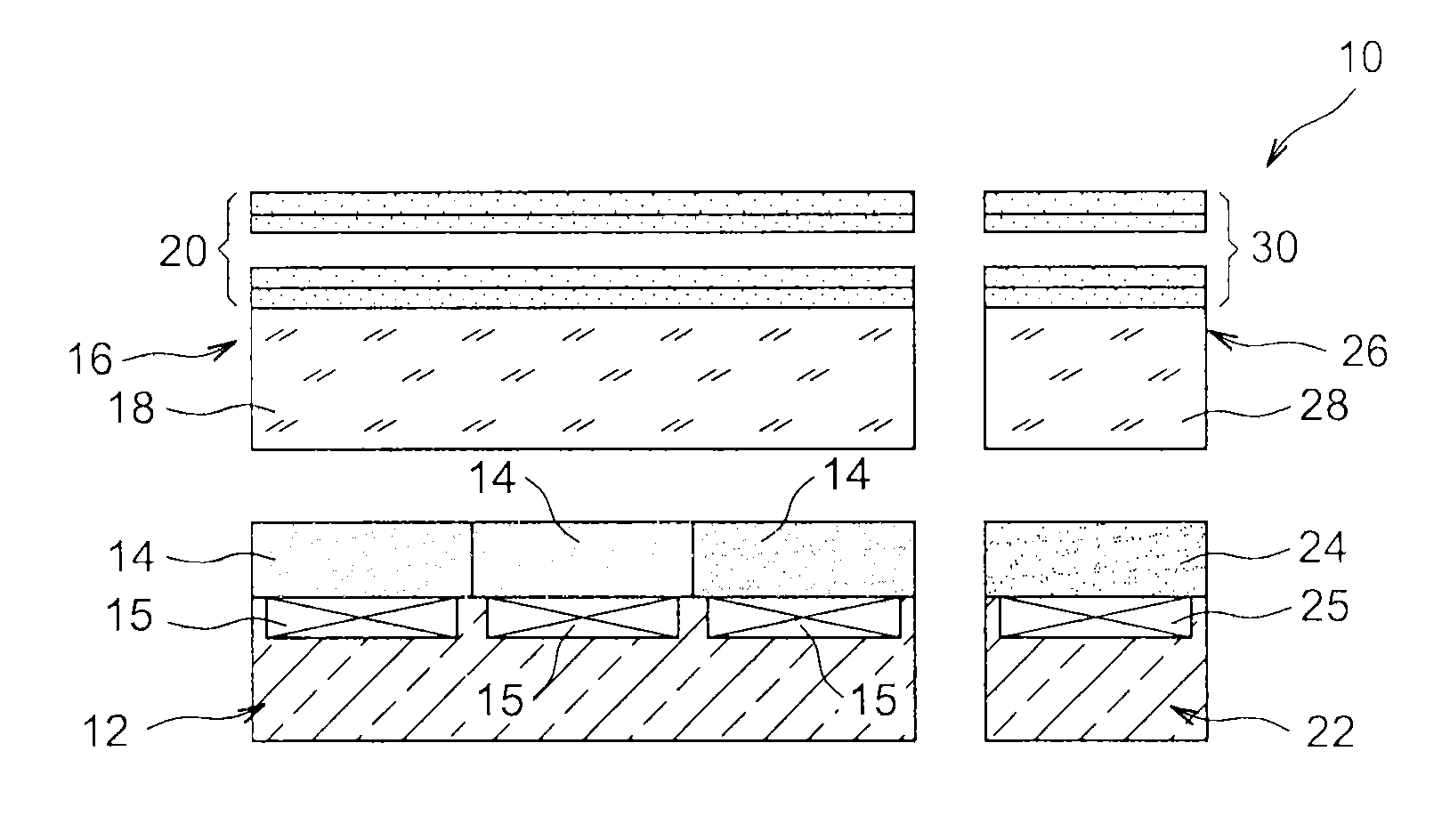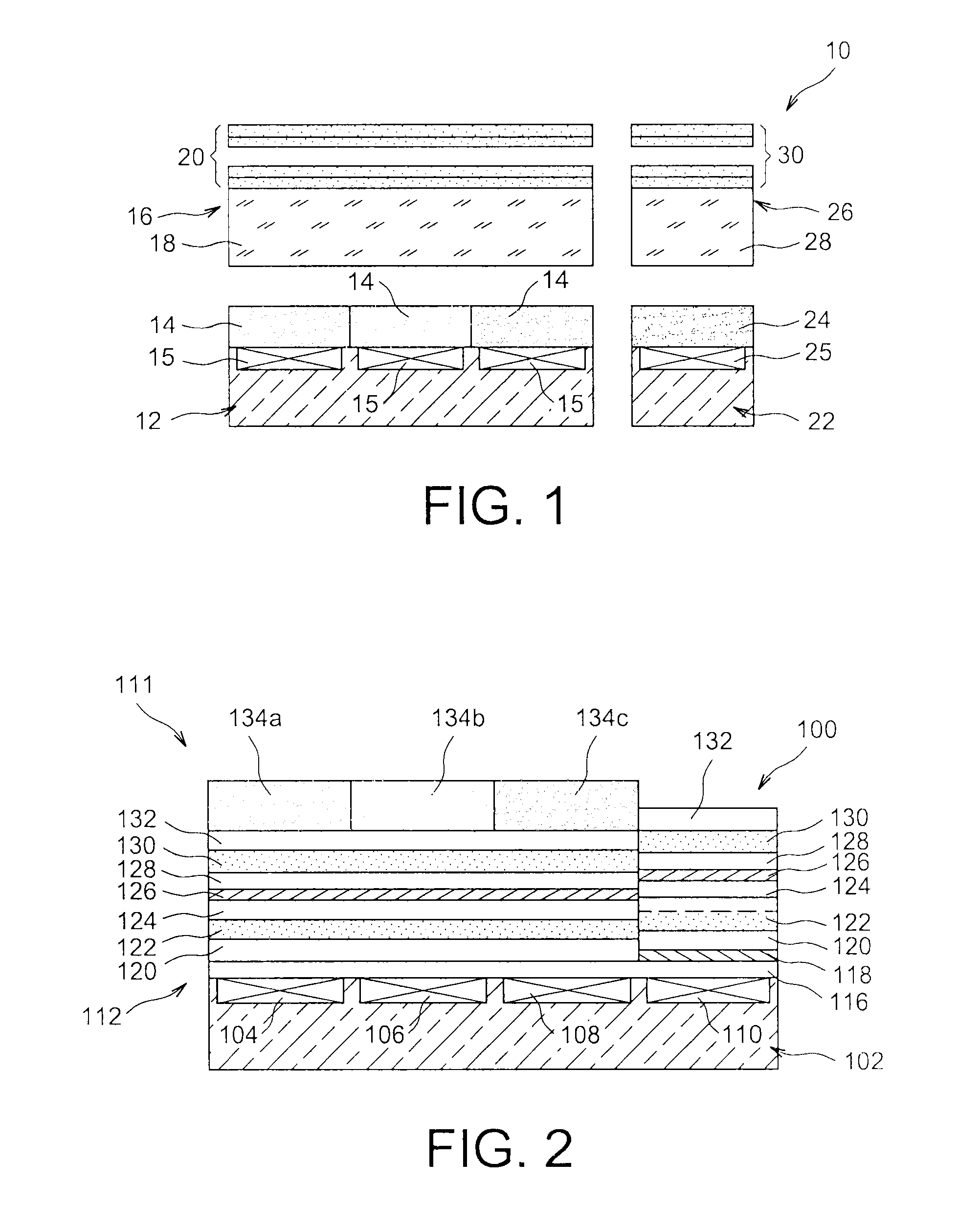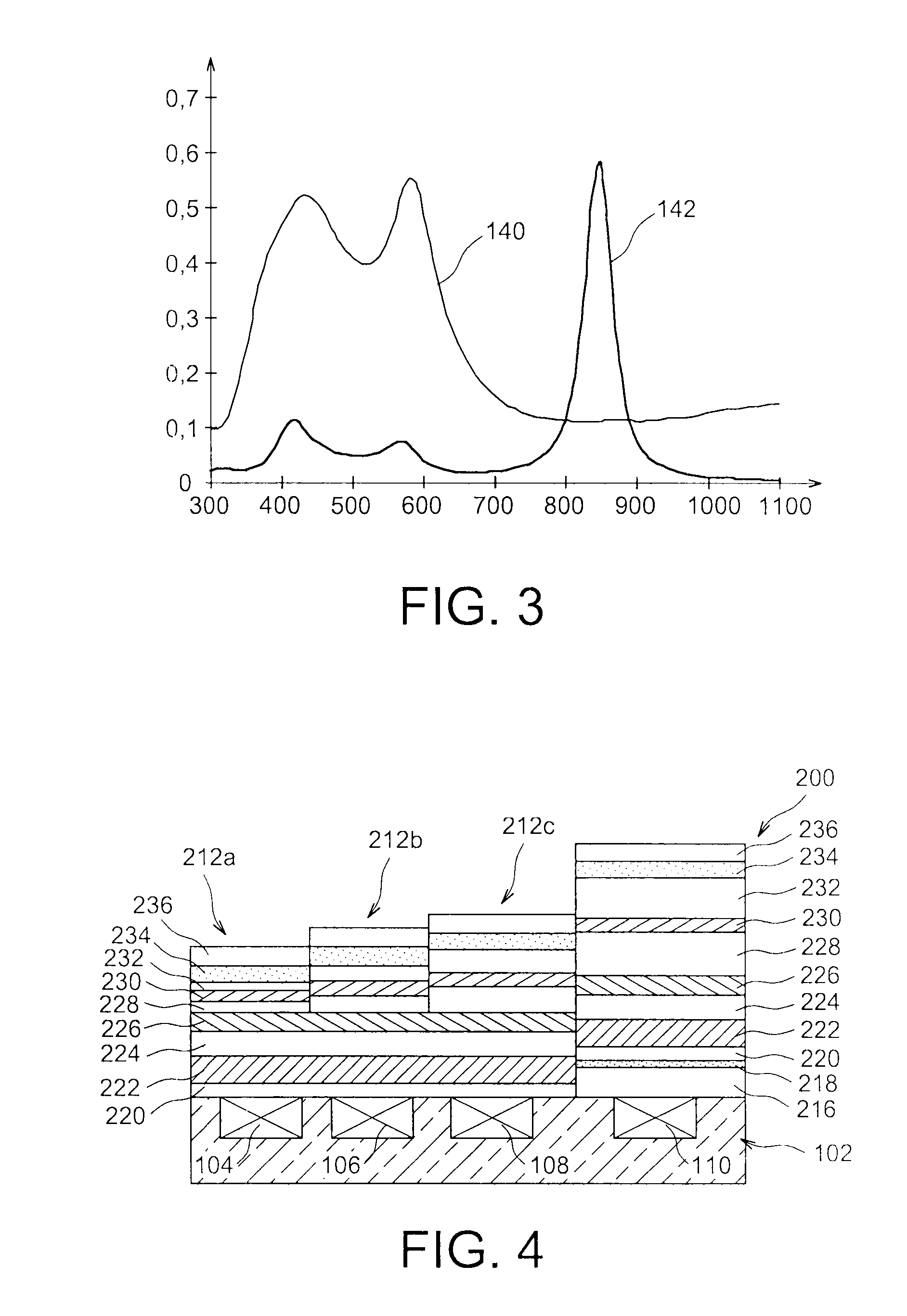Optical filtering structure in the visible and/or infrared domain
a filtering structure and visible and/or infrared technology, applied in the field of optical filtering structure, can solve the problems of degrading the signal-to-noise ratio of the device, unable to achieve the spectral response of coloured resin b>14/b>, and unable to achieve the spectral response of the colour resin
- Summary
- Abstract
- Description
- Claims
- Application Information
AI Technical Summary
Benefits of technology
Problems solved by technology
Method used
Image
Examples
first embodiment
[0059]FIG. 2 represents partially and schematically a photodetector device comprising a filtering structure ;
[0060]FIG. 3 represents the spectral responses of the filters of the filtering structure according to the first embodiment;
second embodiment
[0061]FIG. 4 represents partially and schematically a photodetector device comprising a filtering structure ;
[0062]FIG. 5 represents the spectral responses of the filters of the filtering structure according to the second embodiment;
[0063]FIGS. 6 and 7 represent the spectral responses of the filters of the filtering structure according to different variants of the first embodiment;
[0064]FIG. 8 represents the spectral responses of the filters of the filtering structure according to a variant embodiment.
[0065]Identical, similar or equivalent parts of the different figures described hereafter bear the same numerical references so as to make it easier to go from one figure to the next.
[0066]In order to make the figures more legible, the different parts (particularly the layers) shown in the figures are not necessarily according to a uniform scale.
[0067]The different possibilities (variants and embodiments) should be understood as not being mutually exclusive and may be combined together...
PUM
 Login to View More
Login to View More Abstract
Description
Claims
Application Information
 Login to View More
Login to View More - R&D
- Intellectual Property
- Life Sciences
- Materials
- Tech Scout
- Unparalleled Data Quality
- Higher Quality Content
- 60% Fewer Hallucinations
Browse by: Latest US Patents, China's latest patents, Technical Efficacy Thesaurus, Application Domain, Technology Topic, Popular Technical Reports.
© 2025 PatSnap. All rights reserved.Legal|Privacy policy|Modern Slavery Act Transparency Statement|Sitemap|About US| Contact US: help@patsnap.com



